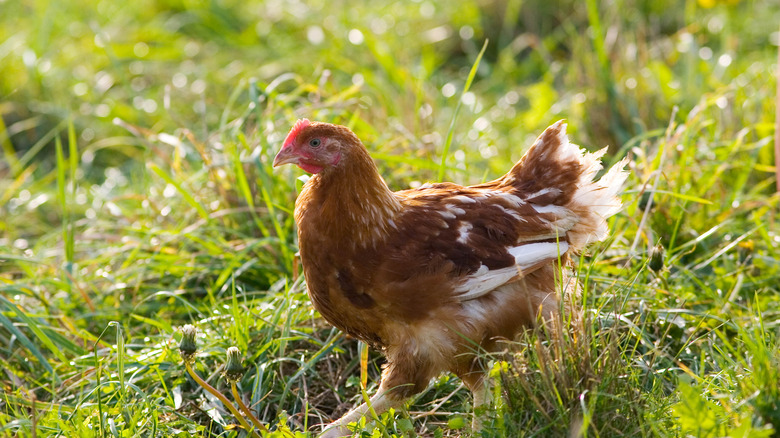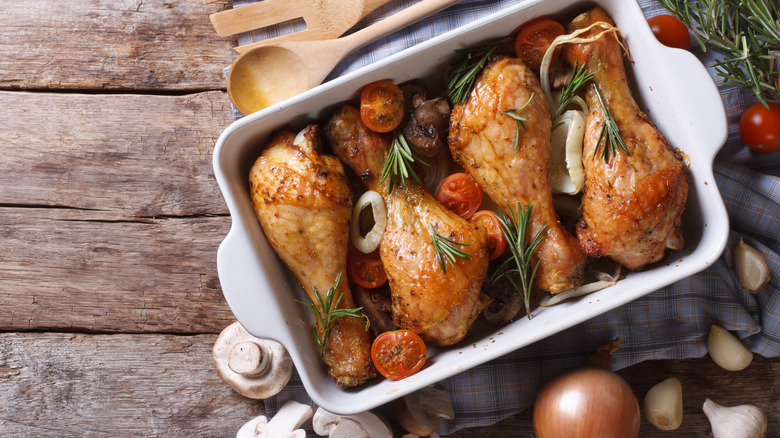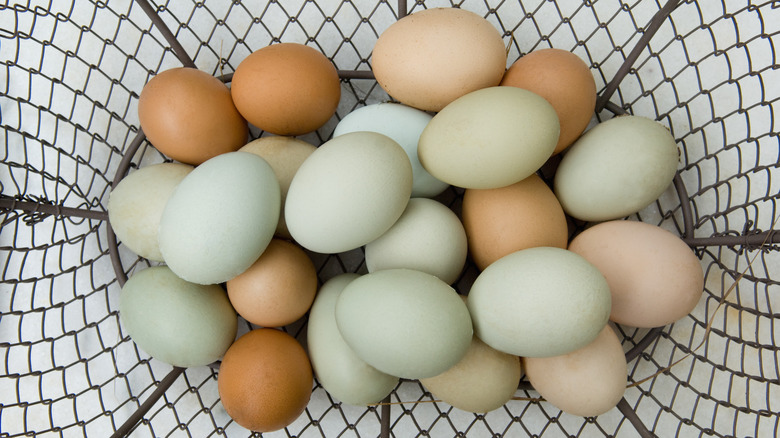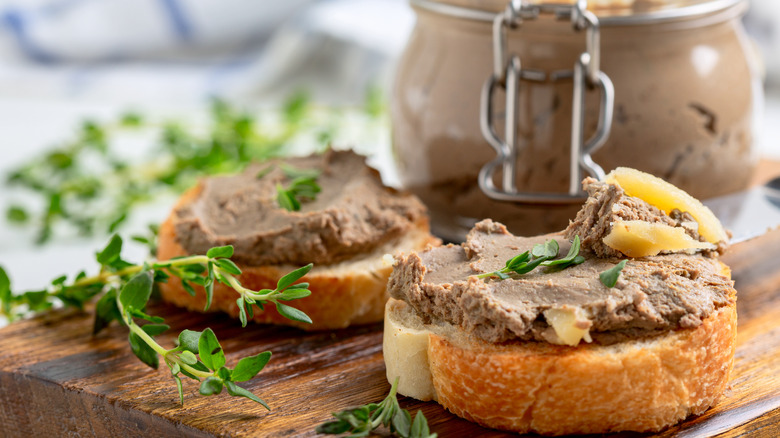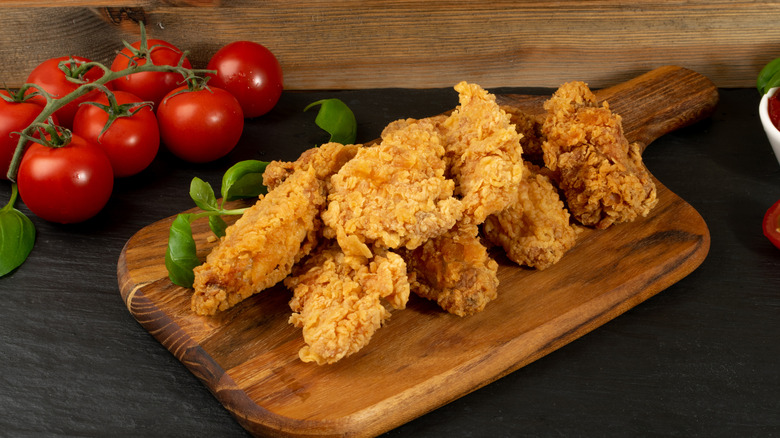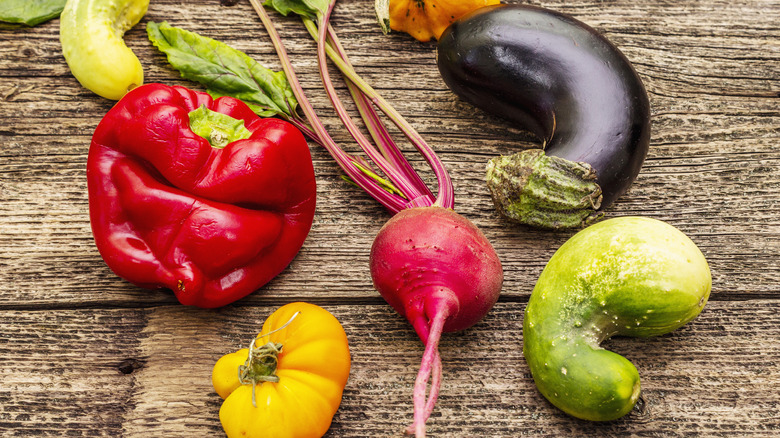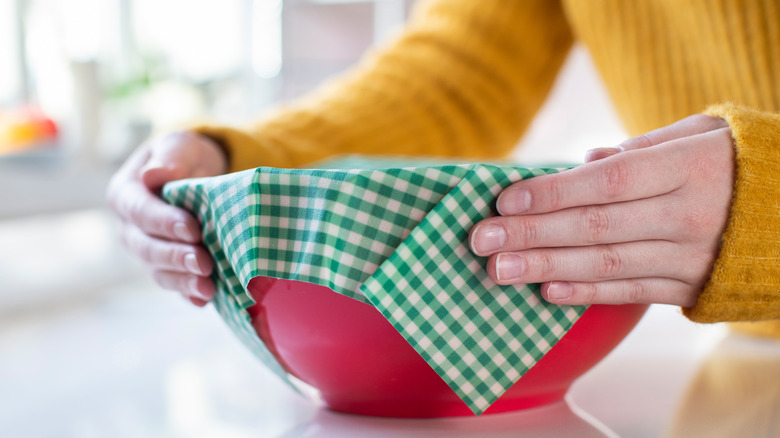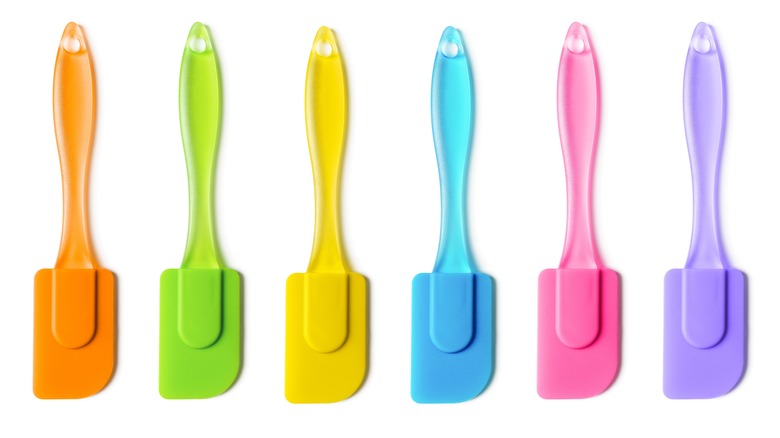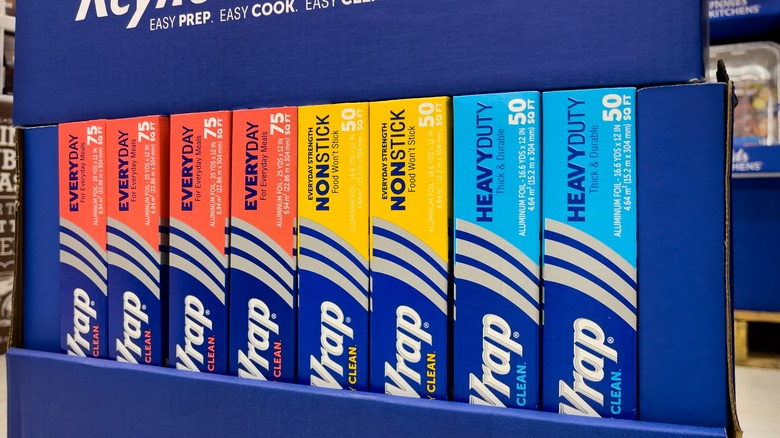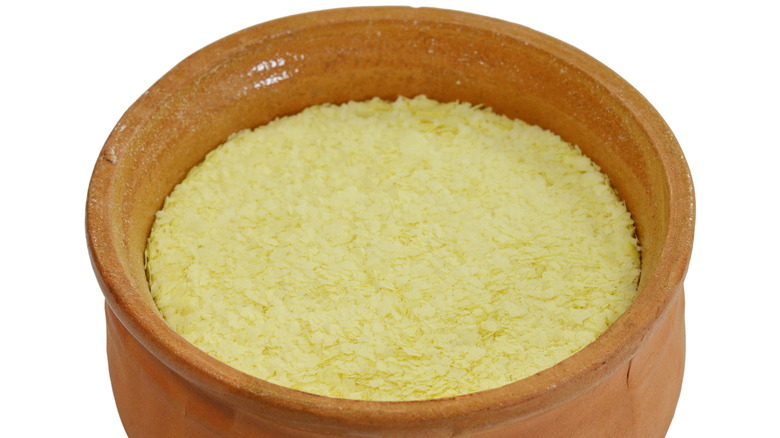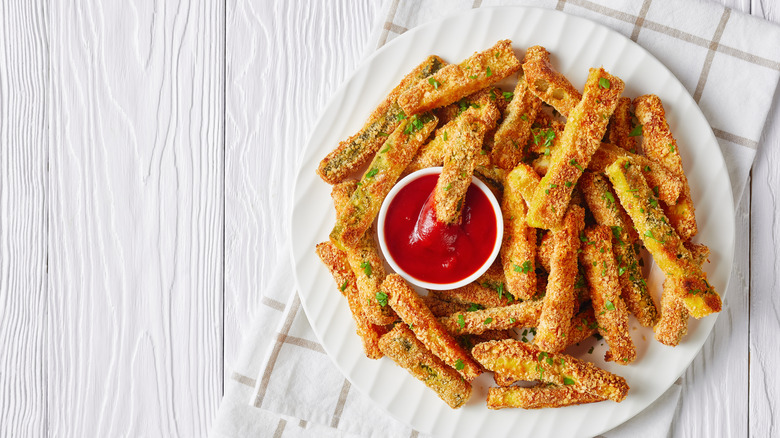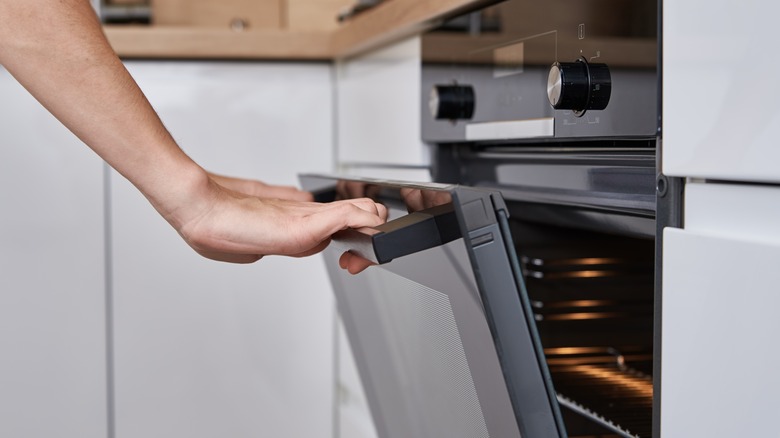Jacques Pépin's 14 Best Tips For Home Chefs
Foodies around the world hold Chef Jacques Pépin in the highest esteem, one of our time's most respected culinary figures. Officially, his career in the kitchen began when he was only 13, as an apprentice at the Grand Hôtel de L'Europe in his hometown of Bourg-en-Bresse, near the culinary capital of Lyon (via The Jacques Pépin Foundation). This was followed by time in Paris, bringing his talents to the tables of three French heads of state — one of which was Charles de Gaulle — and guests at the stunning Hôtel Plaza Athénée. Pépin moved to the US in the late 1950s, where he worked for Le Pavillon and Howard Johnson. He also earned an education from Columbia University, has taught widely, and has been consistently recognized and awarded for his culinary contributions that amount to no less than a cultural benchmark.
But Chef Jacques Pépin's love of cooking began at home, in his parent's kitchen, and in the restaurant they ran. Home is also the setting where many of his fans became familiar with his wide range of instructional materials, thanks to his extensive generosity displayed in his books, articles, and television shows. Pépin has offered endless advice to home cooks, from economics in the kitchen to his favorite tools. Here are some of our favorites.
Always buy organic eggs and chicken
Celebrating his "lifelong long love for chicken," according to his publisher HarperCollins, his most recent book, "Jacques Pépin Art of the Chicken: A Master Chef's Paintings, Stories, and Recipes of the Humble Bird" reveals plenty about what might be one of his most commonly used ingredients. This is also true for many home chefs, as households often rely on chicken for many weeknight and special occasion meals.
During an exclusive interview with Tasting Table, Pépin told readers, "In terms of chicken, look at the organic chicken." The same goes for organic eggs, which he noticed are often only slightly more expensive than conventional eggs. However, he cautions that people should buy the best they can afford. "I will go for organic chicken usually," Pépin told Tasting Table. "But if I go to my market and they're selling conventional chicken, and today you get two for one, I'll get those and put them in the freezer." As a reminder, the United States Department of Agriculture (USDA) mandates that organic labels from chicken mean the poultry must be free-range, naturally raised, and fed an organic diet.
Cook chicken at a high temperature and let it rest
Despite the fact that chicken is a popular home cooking ingredient, Chef Jacques Pépin told Tasting Table that many people make a crucial mistake when preparing poultry, particularly beginners. This mistake? Overcooking and allowing the chicken to dry out too much. "Especially, the breast can get dry and overcook pretty fast," he says. "One way to cook it to avoid this is to use a very high temperature and let the bird rest or the pieces rest for a while after cooking so that the juice equalizes."
Letting the meat rest is a chicken cooking hack you should practice. Why should chicken be left to rest? When meat cooks, the protein's fibers contract, pushing the juices away from the center of the cut. As it rests, the fibers relax, and the juices settle into the meat rather than being released by the knife slice. How long should meat rest? 10 to 15 minutes is all that it takes.
Select the right eggs
Jacques Pépin is known for his omelets. In another exclusive interview with Tasting Table, the first item among Pepin's rules for eggs to be addressed is gathering the right one. "When you're cooking anything, it helps to start with the best ingredients if you want to get delicious results," says Pépin. "Luckily, nice eggs are an affordable splurge." (In normal times, this is true. As of the writing of this article, the U.S. Bureau of Labor Statistics reported that the average price for a dozen large Grade A eggs were up 60% in December 2022, based on numbers from a year earlier. Whew!)
This is one very versatile ingredient, which is why eggs are eaten around the world in a variety of ways. However, following the technique of this notorious breakfast dish is straightforward. To mimic Pépin's famous French omelet, the ingredient list is simple: the best eggs available to you, butter, salt and pepper, and fine herbs such as parsley or chervil.
When serving offal, make it seem more familiar
How many U.S.-based home cooks make offal these days? Probably not many — but if emulating Chef Jacques Pépin is the goal, it's worth a try. What is offal? Offal is the organs of a butchered animal, generally not including the cuts that people recognize as meat (muscle). In many cultures now and throughout history, tossing out organs is considered wasteful, and Pépin's kitchen philosophy is often economical and resourceful.
When it comes to being faced with unfamiliar ingredients, Pépin suggests — assuming that the home cook has accounted for allergies and dietary restrictions — not telling guests what you've prepared. Let them taste it and hopefully enjoy the flavors first. It's a simple script that goes like this: "People will say, 'What is that?' I say, 'Taste it. You tell me what it is,'" Pépin told Tasting Table. He suggests using chicken liver, for example, to make a mousse. "[With] a dash of cognac or nothing at all, or salt and pepper, people will love it," he says.
Use Wondra flour for crisp chicken breasts
Who doesn't need a satisfying recipe for whole or sliced chicken breasts? In "Fast Food My Way," Jacques Pépin's 2004 book, he reveals the secret ingredient for a perfectly crisped fried chicken breast method: Gold Metal Wondra instant flour. Producer General Mills calls this the "unsung hero of the kitchen," confirming that its lightness makes it ideal for dredging heavier cuts such as chicken. But more isn't better — in fact, one dredge of flour is enough. Wondra is appreciated for its non-clumping quality because rather than lumping, it dissolves when in contact with liquid.
Other tips to master the art of fried chicken include using a flavorful buttermilk brine, letting the chicken come to room temperature, and using a neutral oil. Plus, for home cooks that are just getting the hang of frying, rely on a good thermometer to ensure that the meat inside that golden crust has reached appropriate doneness.
Start early when cooking with kids
Anyone who has enjoyed Chef Jacques Pépin's television programs has noticed that he is always happy to include his granddaughter Shorey. He's even written a book about these memories called "A Grandfather's Lessons: In the Kitchen With Shorey." Though she's in college now, her smile has charmed viewers since she was tiny. Pépin told Tasting Table that his strategy for cooking with kids is getting them in the kitchen early. Have them engage with food as soon as possible in their lives, from helping in the garden to stirring the pot. This is an investment in their lifelong enjoyment of cooking and eating. "That establishes a platform for communication, in a sense," he says. "After, the beauty of it is that you share the food at the table."
Also, among Pépin's tips for family cooking, he recommends feeding babies and children kid-friendly versions of everyday food rather than relying on products made and marketed for little ones. "When my daughter was a child, I don't think we ever bought baby food," he says. "I cooked spaghetti or whatever I had, and then I took some of it to put in the blender to make a puree out of it."
Don't shun ugly produce
According to the United States Department of Agriculture (USDA), food waste is estimated to be between 30 to 40% of the country's food supply. This includes wholesome food that is thrown away uneaten for any reason. Sometimes it is discarded simply because it doesn't look perfect — with funny curves, an unusual size, or modest blemishes and bruises. Most of this food ends up in landfills, eventually contributing to climate change by emitting methane, a greenhouse gas, according to an article examined in the publication Today's Dietitian.
Pépin says that ugly produce shouldn't be ignored. In fact, it might be the most flavorful. When promoting "A Grandfather's Lessons: In the Kitchen With Shorey," he told Tasting Table, "People are going to buy button mushrooms, but they have no taste," he says in an example. "I pick the blackest mushrooms; they are a third of the price and have three times as much taste as conventional mushrooms." Ugly produce may also have more nutritional value. Several studies summarized in Today's Dietitian suggest that imperfect veggies and fruits could contain higher amounts of phytochemicals. According to Harvard Health Publishing, this may help prevent cancer and other diseases.
Be economical in the kitchen
While some ugly or aging produce might have more flavor or nutrients, others might not be ready for the main stage of the dinner table. Chef Jacques Pépin still advocates finding a use for these items rather than throwing them out. One way he discussed with Tasting Table of putting them to work is in a "stone soup," which assembles wilted greens and the remains of vegetables with portions already used, such as half a tomato or already-diced onions. To add another dimension to this mix, toss some couscous and melt some cheese.
Make sure the food hanging around in the fridge is safe to eat. According to the United Nations Global Initiative on Food Loss and Waste Reduction, refrigerators should be set between 34 to 41 F as a best practice. Also, rotate items that have been in the fridge longer so they are near the front as a reminder to use them in a timely manner.
Thoughtfully use leftovers
Chef Jacques Pépin's advice on using leftovers is full of interesting ideas rooted in his upbringing during and after the Second World War in Bourg-en-Bresse, France, where his parents ran a restaurant called Le Pélican (via The Jacques Pépin Foundation). It was during this time that he gained an appreciation for the prudent management of ingredients and food products. He told WBUR's Here and Now that he has more than 30 uses for leftover cheese alone! One of the easiest recipe ideas he's shared with audiences is fromage fort, consisting of bits and pieces of leftover cheese combined in a food processor and mixed with dry white wine, butter, and minced garlic. This finishes like a dip, which can be spread on crackers or a baguette.
Pépin has also appeared on TV, showing off holiday leftover sandwich ideas for remaining turkey, which we can all get behind. Along with that delicious idea, Pépin reduces food waste by retaining vegetable trimmings to make stock, and he offers dozens of ideas about what to do with egg whites and yolks left behind after making a recipe. In fact, that was the subject of Pépin's first book, "The Other Half of the Egg: Or, 180 Ways to Use Up Extra Yolks or Whites," co-authored with Helen McCully and William North Jayme in 1967.
Use a flexible spatula
Adhering to the topic of food waste, Jacques Pépin is dedicated to using the right tools for each job, maximizing the home cook's efforts and the ingredients' value. One essential kitchen tool he recommended to Tasting Table during his press tour for "A Grandfather's Lessons: In the Kitchen With Shorey" is a rubber or silicon spatula, particularly for scraping out bowls such as that of the food processor.
This type of spatula, being flexible and available in several sizes, ensures that everything in the processor is transferred, leaving nothing behind. Silicon tools are also stain and odor resistant, making them exceptionally easy to clean. We love that some models are heat resistant up to 500 F, and many have an easy-to-grab "cool touch" handle. If your silicon kitchenware makes food taste like soap or has acquired any aroma or taste after a period of use, there is an easy and inexpensive way to make them like new. Coat them in a paste of baking soda and water and pop them in a 350 F oven for about 10 minutes, releasing the oils that cause sensory influence. Immediately after, toss them into hot water and vinegar to rinse. Just make sure to check the temperature rating of your spatula first.
Befriend non-stick foil
Every pantry should have a roll or two of foil, and at the time we spoke, Jacques Pépin, his recent go-to kitchen essential, was Reynolds's non-stick aluminum foil. There are two sides to this product — one is non-shiny, and this is the non-stick side. Pépin also reported keeping parchment paper on hand for limited instances, but he noted that he didn't love using silicon baking mats. Though Chef Pépin mentioned appreciating the flexibility of this material for his spatula, the tendency for the mats to become greasy and odorous was a turn-off that rendered foil more appealing.
Be sure to look for the product labeled with the yellow "non-stick" indicator to ensure that one side has the dull lack of sheen that signifies the variation. How is non-stick foil made? "In the final rolling step, two layers of foil are passed through the rolling mill at the same time," Mike Mazza, marketing director for Reynolds Wrap, shared with TODAY. "The side coming in contact with the mill's highly polished steel rollers becomes shiny."
Use instant mashed potatoes to thicken soup
Instant mashed potatoes aren't terribly appealing, but they do serve the purpose of ease. While they might look unassuming, these boxed flakes are one genius ingredient Jacques Pépin uses to thicken soup and contribute flavor while doing so. Flour and cornstarch, for which instant potatoes can be substituted, must be mixed with water to avoid clumping, but spud flakes can go right into whatever it is you're simmering.
This is an especially clever move for soups that already feature potatoes, such as a classic French potato and leek recipe, a cauliflower potato soup, or Caldo de queso. We also think this trick would be great with New England clam chowder or a pot of roasted root vegetable soup. Many types of soup exist in the world, so your options are only as limited as you'd like them to be. There are other reasons to keep instant mashed potatoes in the pantry, from crafting a crunchy cheese for chicken to making a topping crust for a savory shepherd's pie.
Don't overlook ketchup
It's an ingredient many people associate with hungry children, salty French fries, and probably not much else. But Chef Jacques Pépin uses this common refrigerator staple in several recipes: ketchup. According to KQED, the public media affiliate station in Northern California, Pépin's recipe for pork tenderloin medallions includes fancy elements, such as pomegranate sauce, alongside a humble 2 tablespoons of ketchup. And an instructional video on PBS includes ketchup in Pépin's recipe for baked salmon with sautéed endive.
Perhaps the best way to think of this condiment as fresh and elevated is to make a simple ketchup recipe at home. It only takes about five minutes and less than 10 ingredients, most of which are pantry staple spices and some organic tomato paste. Another commonly asked question is, what exactly makes certain ketchup "fancy"? According to the USDA, ketchup with 33% solids by weight and scoring over 85 points on a review of several aspects can be labeled Grade A (or fancy, as we might call it). Still, we think homemade might be the stuff!
Watch out for that self-cleaning button on your oven
In Chef Jacques Pépin's exclusive interview with Tasting Table, he describes a Sacramento cooking demonstration he once performed in front of 2,000 people. His dish of choice was a cheese soufflé, which he would prepare and put into the oven and return to the stage when it was finished.
"I came on stage, and I looked at the stove. Everything was working. I looked at the oven. I did my soufflé, put it into the oven and left, and didn't come back for 40 minutes," describes Pépin. "Unbeknownst to me, the oven went on self-cleaning, like 750 degrees or whatever it was. You've never seen a soufflé as black and as burned as mine." It's a reminder that things go awry, even for experienced chefs with tons of support. But still, plenty of pros advise against using that self-cleaning button, so perhaps it's something to avoid all around. Despite the black soufflé, however, Pépin says he got a standing ovation for that demonstration!

